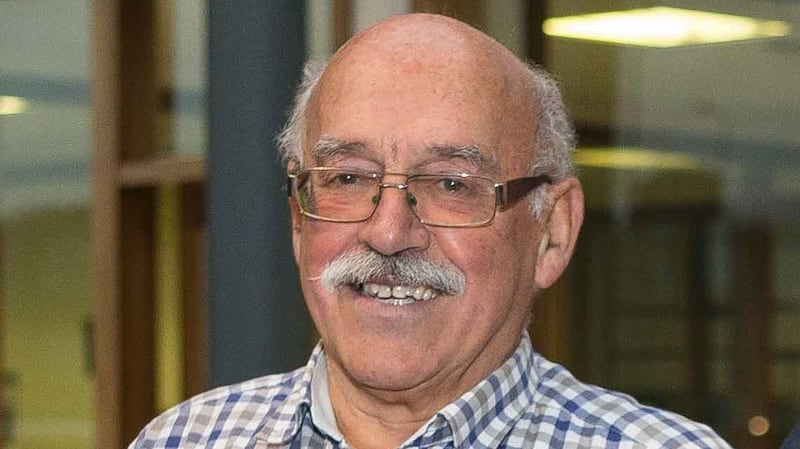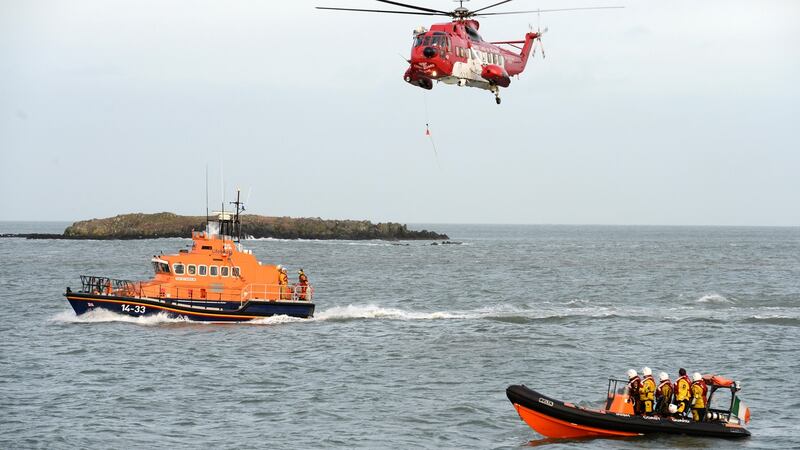The British Maritime and Coastguard Agency (MCA) is reviewing the circumstances surrounding the death of Irish Coast Guard volunteer Caitríona Lucas off the Clare coast last September.
The Marine Casualty Investigation Board (MCIB), which is leading the separate State inquiry into the incident, has also taken the unprecedented move of appointing two senior investigators for the case.
A third investigation is being conducted by the Health and Safety Authority (HSA).


Even though Ms Lucas was a volunteer, the situation is deemed to have been a workplace incident under the Safety, Health and Welfare at Work Act 2005.
The British MCA review was requested by the Irish Coast Guard after it said it would undertake an internal inquiry into how Ms Lucas died.
It is expected to focus on procedures, training and the sequence of events off the Clare coast on September 12th, 2016.
Ms Lucas, a member of Doolin Coast Guard since 2006, along with her husband Bernard, had volunteered for the joint search organised by the Kilkee Coast Guard Unit for missing Lissycasey school inspector David McMahon.
Ms Lucas, and Kilkee Coast Guard volunteers Jenny Carway and coxswain James Lucey had communicated by VHF radio to say they were returning to base when their rigid inflatable boat (RIB) was caught by a wave just beyond the Pollock Holes, and all three were thrown into the sea.
Experienced
The 41-year-old librarian and mother of two was highly experienced in boat and cliff rescue, with a range of qualifications from coxswain and navigation to climbing, first aid and emergency response.
She and her husband Bernard were respected members of one of the top rescue teams on the coast, led by officer-in-charge Mattie Shannon.
The search for Mr McMahon, which Ms Lucas volunteered to help with, was conducted by both Civil Defence and Kilkee Coast Guard.
At the time, the latter unit was still embroiled in a difficult transition from community rescue to State-funded organisation.
Founded as a voluntary response unit by restaurateur, fisherman and auctioneer Manuel Di Lucia 36 years ago, the Kilkee Marine Rescue Service had a very high success rate in an area that is a magnet for marine leisure.
Mr Di Lucia, three-times town mayor, says the community had favoured the takeover by the Irish Coast Guard, as it was becoming difficult to raise funds.
However, tensions arose when some existing volunteers, including the then chief coxswain, were told their services were not required.
Fine Gael TD Pat Breen (now a Minister) agreed in early 2012 to chair a meeting in Ennis to come to an agreement.
In October 2013, the Irish Coast Guard got a letter from legal representatives for Kilkee Marine Rescue Service, claiming that certain agreed terms had been breached.
The following month, Mr Di Lucia emailed then minister for transport Leo Varadkar, whose department holds responsibility for the Irish Coast Guard, to ask him to intervene .
Horse-drawn wagons
Mr Varadkar replied that, while he appreciated a changeover of this type might pose some “initial challenges”, he was “satisfied that arrangements are in place to address any concerns”.
The 920 volunteers attached to 43 units form the backbone of the Irish Coast Guard network and perform 84 key functions in cliff and boat rescue and shore searches.
The network was established 26 years ago after a campaign to highlight lack of air/sea rescue spearheaded by Donegal community activist Joan McGinley.
Its first director, Capt Liam Kirwan, took a little-known scattered unit of horse-drawn wagons and occasional candle-lit stations and transformed it into a 21st-century cohesive organisation with four medium-range helicopter bases, inshore rescue boats, and extension of responsibility to inland waterways and mountain rescue.
Capt Kirwan placed great emphasis on co-operation with the Royal National Lifeboat Institution (RNLI), the Naval Service and Air Corps – the latter was still involved in air/sea rescue until it was withdrawn in 2004.
Training was also a pre-requisite for volunteers, due to the risks.
In August 2014, for example, volunteers from Dingle, Co Kerry, who were attempting to help surfers had to be rescued by the Shannon helicopter when their RIB capsized.
The ultimate cost of such risks is reflected in the naming of the State's marine gallantry awards after Michael Heffernan, a diver who died while carrying out a cave rescue in north Mayo in October 1997.
An RNLI memorial at its headquarters in Poole, England, includes the names of 66 Irish lifeboat crew from 17 stations who never returned home, from 1821 to 1977.
Also remembered are the four Air Corps Dauphin helicopter crew members who died on return from a search off the Waterford coast on July 1st, 1999, and Naval Service leading seaman Michael Quinn who died assisting a Spanish fishing vessel in Bantry Bay, Co Cork on January 31st, 1990.
Capt Kirwan's successor, former Naval Service officer Chris Reynolds, expanded the organisation further and sought to increase its status – sometimes treading on sensitive toes.
Investment in Irish Coast Guard stations included locating new bases next to the RNLI in areas such as Crosshaven, Co Cork.
Understaffing
A 10-year, €500 million contract from 2012 to 2022 for faster and safer Sikorsky S-92 helicopters proved controversial.
Former Air Corps officer Commdt Seamus McCormack said the State could have saved substantially if the Air Corps had been asked to tender for at least part of the work.
The Irish Coast Guard has in turn sought to give greater return for the investment by undertaking air ambulance work for the Health Service Executive when the Air Corps is not available.
There have been other difficulties, including an unsuccessful attempt to rationalise the coast radio station network in Dublin, Valentia, Co Kerry and Malin, Co Donegal.
A series of value-for-money and other internal reports, released under Freedom of Information legislation, have highlighted resource and staff shortage issues. The Irish Coast Guard has 54 full-time staff – reduced from 80 – and several more on contract at a time of growing pressure.
In a memo dated January 28th, 2015, Mr Reynolds said that understaffing could “fall below the standards required under the search and rescue and related conventions”, with a “serious risk to life” and impairment of capacity to respond to pollution incidents.
He also warned of “health and safety implications for our volunteer and full time staff”.
Last August, Mr Reynolds was seconded to a new post as head of operations with Eucap Nestor, an EU civilian mission to tackle piracy in Somalia.
Mr Reynolds's deputy director Eugene Clonan also identified "gaps of unresolved weaknesses" in a report for the Department of Transport's Irish Maritime Administration wing, dated April 24th, 2015.
A separate report by Irish Coast Guard search and rescue operations manager Gerard O’Flynn, dated October 25th, 2016, identified eight key gaps.
These included the lack of a health and safety specialist, training officer, a marine engineer for boat maintenance, reasonable time with volunteers, sufficient direct oversight and review of routine operations, and a robust training record and equipment service record system.
Communication Workers Union national officer Cormac Ó Dálaigh is critical of the lack of independent representation for volunteers, who receive a small stipend.
He has been approached by volunteers with issues, including Seamus Power, who was officer in charge of the Coast Guard's Bonmahon unit in Co Waterford from 2004 until his suspension and subsequent dismissal in December 2016.
‘Too many chiefs’
Mr Ó Dálaigh believes that, where allegations are made in the Irish Coast Guard, relating to bullying or other issues, there should be independent representation.
Rural Alliance TD for Cork South-West Michael Collins recently called on Taoiseach Enda Kenny to legislate to create a standalone agency, but says he believes the Irish Coast Guard has "too many chiefs and not enough Indians".
The Department of Transport has said human resources matters associated with volunteers “are dealt with in accordance with Coast Guard practice and procedure”.
It has invested €100,000 in upgrading the Kilkee unit since Ms Lucas died, including provision of a new RIB, and says it will be operational soon.
Bernard Lucas, who was alerted as part of the Doolin unit to respond to the Kilkee capsize and endured a harrowing flight with his injured wife in the Irish Coast Guard helicopter to hospital in Limerick, has given moving testaments about her commitment to helping others.
He has returned to his own volunteering duty in Doolin, and told The Irish Times he would prefer not to comment on the circumstances at Kilkee on September 12th.
“I have very limited information, and I would not want to compromise the investigations in any way,” he said.








